There’s a medical reason many older adults begin to lose muscle mass as they age. It’s called sarcopenia, and it’s a condition that causes a reduction in both skeletal muscle mass and strength. More common among older adults, sarcopenia can negatively impact your quality of life by keeping you from the activities you enjoy most. Research studies suggest that you can prevent or even reverse sarcopenia through improved nutrition and frequent physical activity – specifically strength training.
Learn more about strength training – how it can be beneficial any age, as well as tips for getting started in this blog.
Benefits of Strength Training for Older Adults
It’s common to think of strength training as something reserved for serious, rather than recreational athletes . Strength training offers a variety of benefits, especially as we age – no heavy weights required!
An increasing number of people – young and old – are catching on to the benefits of strength training. According to U.S. News & World Report, strength training delivers numerous health benefits, including:
- Lowering your amount of abdominal fat
- Reducing your cancer risk
- Increasing your flexibility and mobility
While cardiovascular exercises - like walking, jogging, and cycling - are important, they are just one piece of the fitness puzzle.
Cardio can help you burn calories, sleep better, and keep your heart healthy, but for the best results, try adding strength training to your exercise repertoire.
The U.S. Department of Health and Human Services created new physical activity guidelines in 2018. Included in the guidelines was the recommendation that all adults “should also do muscle-strengthening activities of moderate or greater intensity and that involve all major muscle groups on two or more days a week.”
As you begin strength training, plan to incorporate it into the exercise you’re already getting for the best results.
Related: How to feel years younger and get your energy back >>
Deciding where to work out
Knowing the health benefits of strength training may make you eager to get started. It is important to consult with your doctor first, just as you would before making any major lifestyle change. While increased physical activity is safe for most people, be sure to keep any health conditions in mind.
If you’re cleared by your physician to start exercising, you may be wondering where to begin. You have multiple options that you can tailor to your needs and preferences.
The simplest, most inexpensive way to get started is by working out at home. Whether you learn a few moves by heart, or watch a workout video online (there are a plethora available), this is a low-pressure way to dip your toe into the strength training pool.
One drawback of working out at home is you likely won’t have a lot of equipment, at least at first, which is why some prefer to join a gym. Search for one in your area, and visit a few to find a gym that fits your tastes.
Look for a group classes, or a personal trainer for added motivation and support. They can also help you learn more about strength training, while getting feedback on your form and progress.
What kind of exercises should I do at first?
As you’re getting started, take things slow. Give yourself as much time as you need to learn how to do strength training properly.
Above all, focus on form - doing the exercises correctly - rather than the amount of weight. This can help prevent injuries while ensuring you’re getting the most benefit from the workout. In fact, doing bodyweight exercises (those using your own weight only) is a great way to start building strength while working up to more challenging moves.
Choose from a few of these exercises to begin, doing 10-15 repetitions per set. According to exercise physiologist Gavin McHale, quoted in a Silver Sneakers article, “When that starts feeling easy, it’s your cue to progress to weighted workouts.”
Finally, don’t be afraid of mild muscle soreness - it means your muscles are trying something new and recovering. Common sense is key here - take a break if you feel actual pain or need longer to recover, and contact a doctor if something feels off.
Here are five exercises from Next Avenue that seniors can try to get started. Once you feel comfortable doing these exercises with your body weight, you can begin to add weights to each one.
- Squats (Targets quads, hamstrings, and calves). Lower your body down, keeping your weight in your heels, as if you’re going to sit down. Stop before you reach the bottom of the move and return to a standing position.
- Push-ups (Targets the chest). Keep your body in a straight line as you drop yourself down to the floor, stomach-down, with your hands and toes. Make this move easier by resting your knees on the floor or doing it standing up against a wall.
- Lateral raises (Targets the shoulders). From a standing position, raise your arms laterally out at your sides up to your shoulders. Squeeze your muscles on the way up and at the top, then slowly lower.
- Curls (Targets biceps and triceps). Stand with your feet slightly apart and arms at your sides. Clench each hand into a fist and raise your arms upward, keeping your muscles squeezed as you go. Slowly lower. Keep your elbows in a steady position the entire time.
- Planks (Targets abs and core). Similar to a pushup, keep your body in a straight line as you support yourself, face-down, by either your palms and toes (for an easier version) or forearms and toes (for a harder version). Hold for at least 20 seconds or as long as possible.
Tips for Sticking With Strength Training
Making any lifestyle change can be difficult - after all, your brain is wired to resist change. That is why it can be so difficult and time-consuming to form new habits.
Since your brain likes to do things automatically, use that to your advantage. For example, choose a time to work out each day, and put it into your calendar. When it is time for your appointment, you will get started without having to think about it. Or if you work out in the morning, make a habit of setting out your clothes before bed each night so you can wake up and dress quickly.
Get the Most From Strength Training
To get the most out of strength training, you may need to make other lifestyle changes. Think about these three key areas:
- Am I getting enough sleep on a regular basis - at least seven hours?
- Do I eat a healthful diet that includes whole grains and fresh fruits and vegetables?
- Am I getting enough exercise in other ways when I’m not strength training?
Addressing every facet of your health and wellness – sleep, nutrition and regular cardiovascular exercise – will help you reap the most benefits from your strength training routine.
Find More Ways to Stay Healthy and Well
Finding an exercise program that works for you is a key part of staying well. Using the tips above, starting an effective strength training routine should be attainable.
Exercise is just one, albeit important, piece of your wellness journey. Get more tips and inspiration for living life the way you choose by following our blog. You’ll find expert advice and ideas for staying active and healthy, and more.






